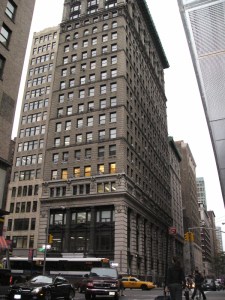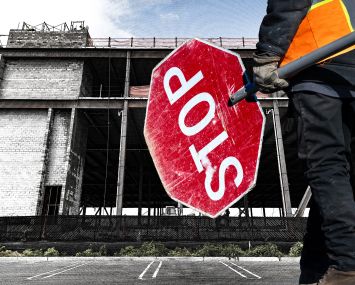Trade You Your Manhattan Office Tower for My Westchester Suburb
By Lysandra Ohrstrom October 27, 2009 7:56 pm
reprints Though it is best known as the first headquarters of FAO Schwarz, or as “the Jewelry Building,” in the beginning, cars and trains-not of the toy variety-figured more heavily than retail did in the story of 303 Fifth Avenue.
Though it is best known as the first headquarters of FAO Schwarz, or as “the Jewelry Building,” in the beginning, cars and trains-not of the toy variety-figured more heavily than retail did in the story of 303 Fifth Avenue.
The 20-story office tower, designed by Buchman and Fox Architects, rose in 1909, when America’s railroad network was still growing and the auto industry was booming (and airplanes were a mere curiosity). One of the founders of the Denver and the Rio Grande Railway, English physician William A. Bell, came to acquire 303 Fifth Avenue five years later.
He got it in exchange for a Westchester suburb.
In 1899, shortly after selling his shares in the Rio Grande company, Bell was approached by John Brisbane Walker, an American investor who owned a steam engine factory on a 165-acre site in Northern Tarrytown, Westchester, and was looking for a partner. Between October 1899 and June 1901, Bell invested $100,000 in the Mobile Company of America and the Philipse Manor Company, named for an estate on the property, according to historian Bernard J. Lillis.
The popularity of the “gasoline carriage” would completely overshadow the steam engine in the next couple of years, forcing the Mobile Company of America to halt production and sell the 10-acre factory site to the Maxwell Briscoe Motor Company in 1903. A year later, Bell paid Walker $200,000 for his stake in the Philipse Manor Company and set out to turn the property into one of New York City’s first true suburbs.
In the spring of 1903, the Philipse Manor Company released its first promotional booklet for potential investors. “The whole tendency of modern life is to acquire a home where all the attractive features of country life may be obtainable with quick transit to the city office,” the 30-page pamphlet read.
Bell assembled a group of British investors, bought some surrounding parcels of land and began work on infrastructure in 1905, building 3.5 miles of roads and five miles of sidewalks and installing sewage, water and electricity systems. Construction of the 26 prebuilt homes in Philipse Manor began in 1909. But, like the steam engine plant, Bell’s investment was not successful, according to his great-grandson, Nicholas Bell, 303 Fifth Avenue’s current owner.
Still, he appeared to be ahead of a trend, not behind it.
“He was trying to make an attractive suburban community for people who wanted to move out of New York, but it was really the early days of commuting,” Mr. Bell said in a phone interview last week. “He was struggling to sell the properties because they were larger than people wanted. Now Philipse Manor is much like my grandfather envisioned it.”
By 1913, the Philipse Manor Company had sold only six homes and several undeveloped parcels. “It appears that the company misread the market,” Mr. Lillis wrote in an article that originally appeared in the Westchester Historian, “building houses that were too large and too expensive. By the time this had been recognized, it was too late, and the increasing financial difficulties meant Dr. Bell was looking for a way out.”
That way out was 303 Fifth Avenue. The story goes that Bell met a man named Campbell Carrington on the train and agreed to swap the would-be Westchester suburb for the newish Manhattan building. The two men had never met before, and only about $50,000 in cash changed hands.
Carrington and a group of bondholders bought 303 Fifth Avenue out of auction for $2.1 million in June 1913, The New York Times reported, after the original developer Henry Corn defaulted on it, as well as several other properties, in 1912. Its largest tenant at the time was the Schwarz Company.
Corn had taken a $1.3 million mortgage with the Metropolitan Life Insurance Company to purchase two plots on the northeast corner of 31st and Fifth in January 1909 (just as construction at Philipse Manor began). He paid $1.25 million for the land at 303 and 305 Fifth Avenue, where he planned to build a 20-story building. The project would cost a total of $2.5 million.


